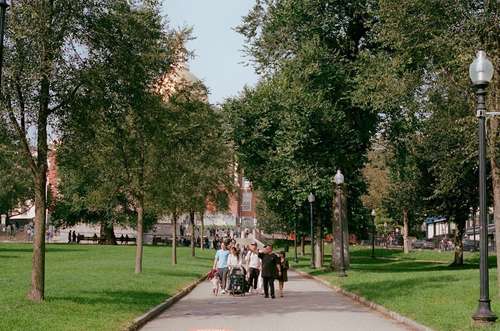Keeping it real, what comes to your mind when Greenland is mentioned? Of course, sheets and sheets of endless white ice and icy winters.
What if you were told Greenland was once Green? For a place called 'Greenland', its is surprising to discover that it is filled with several icecaps. These led people to ask questions like, 'Was Greenland ever green?'
Hold on, scientists have gone into the works, and they discovered that at one time, Greenland was actually green. As recently as 416,000 years ago, Arctic islands were much greener than even some places in the world.
New research has challenged the long-held belief that Greenland's ice sheets have been in place for over 2.5 million years. These findings are expected to alter people's understanding of the region.
But Utah State University geoscientist Tammy Rittenour now has new opinions about the location due to their recent findings. Greenland's original size and structure had greens in it before a different kind of climate change came.
"We're discovering the ice sheet is much more sensitive to climate change than we previously thought. This is a foreboding wake-up call," Rittenour said.
Apparently, previous climate change effects which happened in the location had caused the ice sheets there to melt down. This led scientists to believe that the ice sheets there might not be as formidable as previously thought.
"We had always assumed the ice sheet has remained about the same for nearly 2.5 million years. But our investigation indicates it melted enough to allow the growth of moss, shrubs and buzzing insects during an interglacial period called Marine Isotope Stage 11, between 424,000 to 374,000 years ago," Tammy Rittenour said.
Greenland Ice Melting Behind Sea Level Increase
According to Tammy Rittenour, the ice melting that happened in Greenland approximately 424,000 years ago contributed to the massive sea level increase that occurred then. Rittenour says that some of their model of research shows that the sea levels, as a result of the Greenland ice melting, reached levels up to 20 feet higher than today.

"Some of our model scenarios suggest sea levels up to 20 feet higher than today. It was an unusually long period of warming with moderately elevated levels of carbon dioxide—CO2—in the atmosphere. What's alarming about this finding is today's CO2 levels are 1.5 times higher," she added.
According to Rittenour, even if humans were to cease all activities that contribute to global warming today, the current condition of the earth could still result in the disintegration of Greenland's ice. This eventuality could cause perilous sea levels that would put human lives at risk.
"We'd still have inflated CO2 levels for hundreds, maybe even thousands, of years to come," she said.
Greenland's Past Could Happen Again
Tammy Rittenour warns that it is possible that the world will be back to what Greenland witnessed more than 424,000 years ago if global warming continues at its current rate.
"These once lost, Cold War relics from a top-secret nuclear military base carved within the ice are continuing to tell their secrets and forewarn us of the sensitivity of Earth's climate. If we can lose the far northwest portion of the Greenland ice sheet under natural conditions, then we're treading dangerous waters given current elevated greenhouse gas conditions," Tammy Rittenour said.




